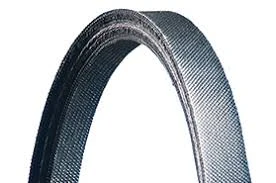- Arabic
- French
- Russian
- Spanish
- Portuguese
- Turkish
- Armenian
- English
- Albanian
- Amharic
- Azerbaijani
- Basque
- Belarusian
- Bengali
- Bosnian
- Bulgarian
- Catalan
- Cebuano
- Corsican
- Croatian
- Czech
- Danish
- Dutch
- Afrikaans
- Esperanto
- Estonian
- Finnish
- Frisian
- Galician
- Georgian
- German
- Greek
- Gujarati
- Haitian Creole
- hausa
- hawaiian
- Hebrew
- Hindi
- Miao
- Hungarian
- Icelandic
- igbo
- Indonesian
- irish
- Italian
- Japanese
- Javanese
- Kannada
- kazakh
- Khmer
- Rwandese
- Korean
- Kurdish
- Kyrgyz
- Lao
- Latin
- Latvian
- Lithuanian
- Luxembourgish
- Macedonian
- Malgashi
- Malay
- Malayalam
- Maltese
- Maori
- Marathi
- Mongolian
- Myanmar
- Nepali
- Norwegian
- Norwegian
- Occitan
- Pashto
- Persian
- Polish
- Punjabi
- Romanian
- Samoan
- Scottish Gaelic
- Serbian
- Sesotho
- Shona
- Sindhi
- Sinhala
- Slovak
- Slovenian
- Somali
- Sundanese
- Swahili
- Swedish
- Tagalog
- Tajik
- Tamil
- Tatar
- Telugu
- Thai
- Turkmen
- Ukrainian
- Urdu
- Uighur
- Uzbek
- Vietnamese
- Welsh
- Bantu
- Yiddish
- Yoruba
- Zulu
ກ.ຍ. . 09, 2024 03:30 Back to list
belt in motorcycle
Understanding the Role of Belts in Motorcycles
Motorcycles are fascinating machines that combine power, speed, and agility. At the heart of their functioning, numerous components work in harmony to deliver an exhilarating riding experience. Among these components, one often-overlooked element is the drive belt. While many motorcyclists focus on engines, brakes, and tires, understanding the role of belts can enhance performance and maintenance knowledge.
What is a Drive Belt?
A drive belt, or rubber belt, is a crucial component in certain types of motorcycles, particularly in models with automatic transmissions, such as scooters and many cruisers. Unlike traditional chain or shaft drive systems, belt drives use a belt to transfer power from the engine to the rear wheel. Typically made from reinforced rubber, these belts are designed for strength and flexibility while enduring significant stress and wear.
Advantages of Belt Drives
Belt drives offer several advantages that can make them appealing for both casual riders and enthusiasts. One of the most notable benefits is their smooth operation. Belts produce less vibration compared to chains, resulting in a quieter ride. This can significantly enhance the riding experience, especially on long journeys where engine noise can become tiresome.
Another advantage is the minimal maintenance required for belt-driven systems. While chain drives necessitate regular lubrication and tension adjustments, belts require far less upkeep—usually just periodic inspections to check for any signs of wear or damage. This can be particularly appealing for riders who prefer a low-maintenance solution, allowing them to spend more time enjoying the open road rather than tinkering in the garage.
belt in motorcycle

Moreover, belt drives tend to be lighter than chain systems, which can contribute to an overall lighter motorcycle weight, enhancing speed and agility. The efficiency of power transfer in belt systems also contributes to better fuel economy in some motorcycle models.
Potential Drawbacks
Despite their advantages, belt drives do have limitations. One of the main concerns is their susceptibility to prolonged exposure to harsh conditions. For instance, debris, water, or extreme temperature changes can impact a belt's performance and durability. Riders who often traverse rugged terrains or engage in aggressive riding may find chain drives to be more robust in such conditions.
Additionally, while belts provide a quiet and smooth operation, they can be more prone to slippage under extreme torque situations, making them less suitable for high-performance motorcycles. This is a key consideration for those looking to push their machines to higher limits.
Conclusion
In conclusion, the belt drive system is an essential aspect of certain motorcycles that showcases innovation in design and functionality. While it offers a range of benefits, such as low maintenance, quiet operation, and lightweight construction, it also has specific considerations that enthusiasts must keep in mind. Whether you're a casual rider opting for reliability or an adrenaline seeker looking for performance, understanding the role of belts in motorcycles can significantly enhance both your riding experience and your knowledge of motorcycle mechanics. As with any component, ensuring the belt is in good condition and appropriate for the intended use will lead to better performance and a more enjoyable ride.
-
Korean Auto Parts Timing Belt 24312-37500 For Hyundai/Kia
NewsMar.07,2025
-
7PK2300 90916-T2024 RIBBED BELT POLY V BELT PK BELT
NewsMar.07,2025
-
Chinese Auto Belt Factory 310-2M-22 For BMW/Mercedes-Benz
NewsMar.07,2025
-
Chinese Auto Belt Factory 310-2M-22 For BMW/Mercedes-Benz
NewsMar.07,2025
-
90916-02660 PK Belt 6PK1680 For Toyota
NewsMar.07,2025
-
drive belt serpentine belt
NewsMar.07,2025

